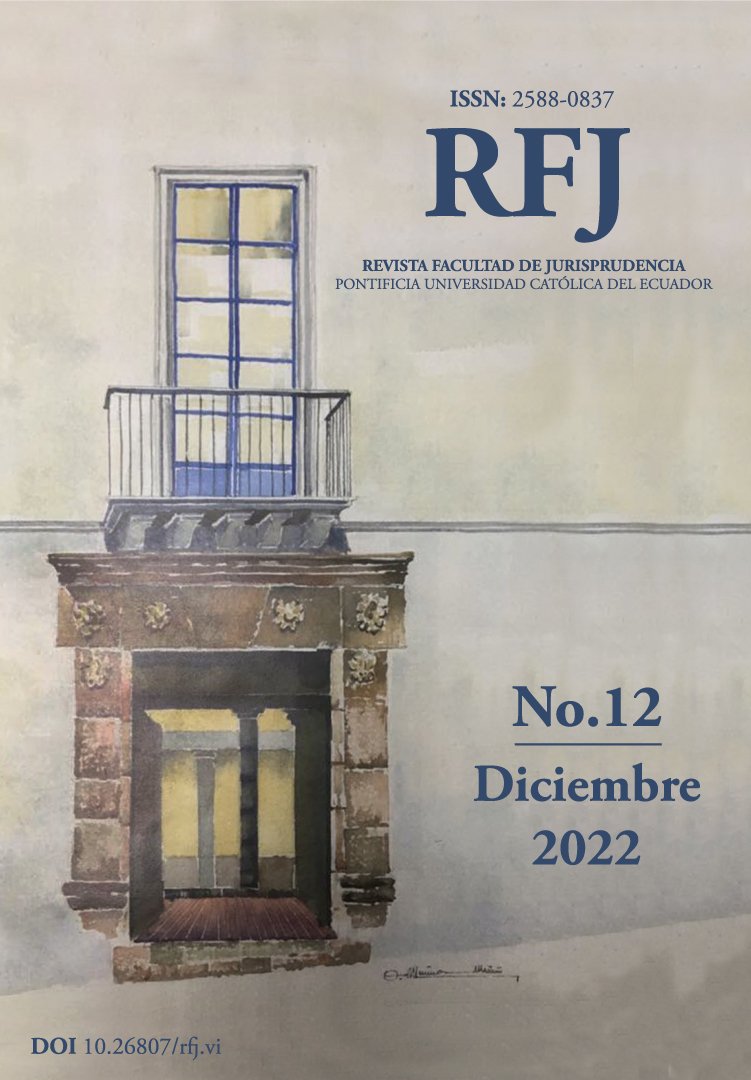Cláusula de Martens: Aplicación en el contexto de la Ciberguerra
Contenido principal del artículo
Resumen
ABSTRACT
Certainly, with the codification of International humanitarian law or commonly known as the law of war or the law of armed conflict, the humanitarian problems derived from the armed conflicts were solved. However, against situations didn’t consider the traditional law is given the possibility of appeal to other sources inside International law like General principles of law, the international custom, or the doctrine. The Martens Clause is shown as a mechanism of interpretation against problems or situations that couldn’t be contemplated by the conventional law of IHL. This article pretends to analyze the application of the Martens Clause in the context of cyberwar. It will be examined in the context of armed conflict, and it will be checked the normative development that could be applied to an armed conflict cataloged as cyberwar. It will be shown the important role that performs the Martens Clause against the empty normative of cyberwar that it will be presented as a new threat inside of the jus in bello.
KEYWORDS: Martens Clause, International Humanitarian Law, Information Society, Cyberwar, Cyberspace.
RESUMEN
Con la codificación del Derecho Internacional Humanitario o mejor conocido como “las leyes y usos de la guerra”, se ha logrado solucionar los problemas humanitarios generados por la barbarie de la guerra. ha sido capaz de resolver los problemas humanitarios generados por la barbarie de la guerra. Sin embargo, en situaciones no contempladas por las normas tradicionales, se deja paso a la posibilidad de acudir a otras fuentes, como los Principios del Derecho Internacional, la costumbre o la doctrina. La Cláusula Martens se presenta como un mecanismo de interpretación ante problemas o situaciones que no pueden ser cubiertas por las normas convencionales del DIH2. Este artículo tiene como objetivo analizar la aplicación de la Cláusula Martens en el contexto de la ciberguerra. En este sentido, se examinará su interpretación en el contexto de los conflictos armados y se identificarán las normas del DIH aplicables a la ciberguerra como conflicto armado, además, se revisará el desarrollo normativo vigente aplicable a un conflicto armado catalogado como ciberguerra. De esta forma, se demostrará el importante papel que juega la Cláusula Martens en el vacío normativo de la ciberguerra, que se presenta como una nueva amenaza latente dentro del jus in bello
CÓDIGO JEL: F02, L86.
Descargas
Detalles del artículo
Citas
BID, & OEA. (2020). Ciberseguridad. Riesgos, Avances y el camino a seguir en America Latina y El Caribe. Recuperado de https://publications.iadb.org/publications/spanish/document/Reporte-Ciberseguridad-2020-riesgos-avances-y-el-camino-a-seguir-en-America-Latina-y-el-Caribe.pdf
Cameron, L., Demeyere, B., Henckaerts, J. M., La Haye, E., & Niebergall-Lackner, H. (2015). The updated Commentary on the First Geneva Convention - a new tool for generating respect for international humanitarian law. International Review of the Red Cross, (97), (pp.1209–1226).DOI: https://doi.org/10.1017/S181638311600045X
Carlini, A. (2016). Boletín de Ciberseguridad: un nuevo desafío para la comunidad internacional. Boletín IEEE, (2), (pp.950-966).
CICR. (1977). Commentary on the Additional Protocols to the Geneva Conventions.Estados Unidos: Kluwer Academic Publishers.
Convención II de la Haya de 1899 Relativa a las leyes y usos de la guerra terrestre y Reglamento anexo.
Drezner, D. (2007). All politics is global: Explaining international regulatory regimes. Estados Unidos:Princeton University Press.
Droege, C. (2011). No hay lagunas en el ciberespacio. Recuperado de: https://www.icrc.org/es/doc/resources/documents/interview/2011/cyber-warfare-interview-2011-08-16.htm
Eissa, S., Gastaldi, S., Poczynok, I., & Zacarías, M. (2012). El ciberespacio y sus implicancias en la defensa nacional. Aproximaciones al caso argentino.Recuperado de:https://core.ac.uk/download/pdf/296371994.pdf
García Zaballos, A. (2016). Best Practices for Critical Information Infrastructure Protection ( CIIP ). Estados Unidos: A&S Information Specialists, LLC.
Harašta, J. (2018). Legally critical: Defining critical infrastructure in an interconnected world. International Journal of Critical Infrastructure Protection, (21), (pp.47–56). DOI: https://doi.org/10.1016/j.ijcip.2018.05.007
Kiggins, R. (2002). US Leadership in Cyberspace: Transnational Cyber Security and Global Governance. J.Kremer & B.Müller (eds.), Cyberspace and International Relations (pp. 161–180). Londres: Springer.
Kittichaisaree, K. (2017). Cyber Warfare. K.Kittichaisare (eds.), Public International Law of Cyberspace (pp. 335–356). Estados Unidos: Springer International Publisher.
Kittichaisaree, K. (2017b). Regulation of Cyberspace and Human Rights. C. Pompeu & G. Sartor (Eds.), Public International Law of Cyberspace. Law, Governance and Technology Series (pp. 45–150). Estados Unidos: Springer International Publisher.
Lopez, J., Setola, R., & Wolthusen, S. D. (2012). Overview of Critical Information Infrastructure Protection. J. Lopez et al. (Eds.), Critical Information Infrastructure Protection, (pp. 1–14).Berlin: Springer-Verlag Berlin Heidelberg.
Luke, V. (2012). Seguridad Informática y Derecho Internacional Público en el siglo XXI: desafíos jurídicos frente a la protección de infraestructuras informáticas. Revista de Derecho Público (77), (pp.405-424). DOI: https://doi.org/10.5354/RDPU.V0I77.30935
Meron, T. (2000). The Martens Clause, Principles of Humanity, and Dictates of Public Conscience. American Journal of International Law, 94(1), (pp.78–89). DOI: https://doi.org/10.2307/2555232
Nickolov, E. (2005). Critical information infrastructure protection : analysis , evaluation and expectations. Information & Security. An Internacional Journal, (17), (pp.105–119).
OAS - Microsoft, O. of A. S. (2018). Critical infraestructure protection in latin america and the caribbean 2018. Recuperado de: https://www.oas.org/es/sms/cicte/cipreport.pdf
Polloni Contardo, M. (2018). El Derecho Internacional como marco regulatorio de la ciberguerra. M.Velásquez (Eds), La ciberguerra sus impactos y desafíos (pp. 1219–145). Chile: Centro de Estudios Estratégicos CEEAG.
Programa Europeo para la Protección de Infraestructuras Críticas (2006)
Pustogarov, V. (1996). Fiódor Fiódorovich Martens (1845–1909) — humanista de los tiempos modernos. Revista Internacional de La Cruz Roja, 21(135), (pp.324–339). DOI: https://doi.org/10.1017/s0250569x00021026
Radu, R. (2002). Power Technology and Powerful Technologies: Global Governmentality and Security in the Cyberspace. J.-F. Kremer & B. Muller (Eds.), Cyberspace and International Relations. Londres: Springer.
Reguera Sánchez, J. (2015). Aspectos legales en el ciberespacio. La ciberguerra y el Derecho Internacional Humanitario. Análisis GESI,(7), (pp.1–30).
Salmon, E. (2012). Introduccion al Derecho Internacional Humanitario.Lima: CICR.
Ticehurst, R. (1997). La cláusula de Martens y el derecho de los conflictos armados. Revista Internacional de La Cruz Roja, 22(140), (pp.131–141). DOI: https://doi.org/10.1017/s0250569x00021919
Tocino, I. M. (2018). La importancia de la cláusula martens en la regulación del uso de drones durante conflictos armados. Lecciones y Ensayos, (101), ( pp. 175–203).
Unión Internacional de Telecomunicaciones. (2008). Recomendación UIT-T X.1205





